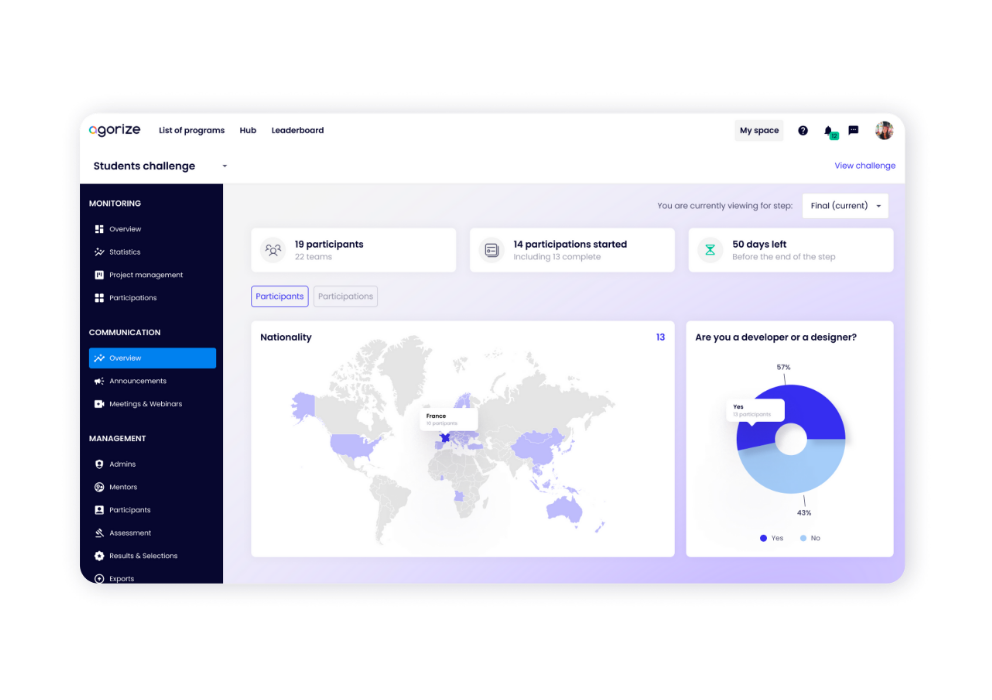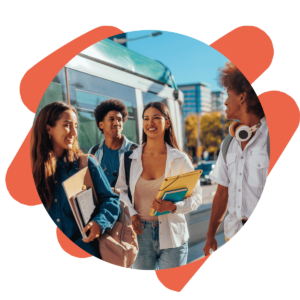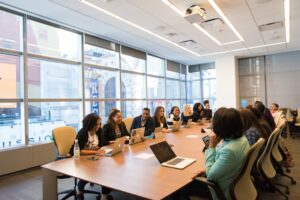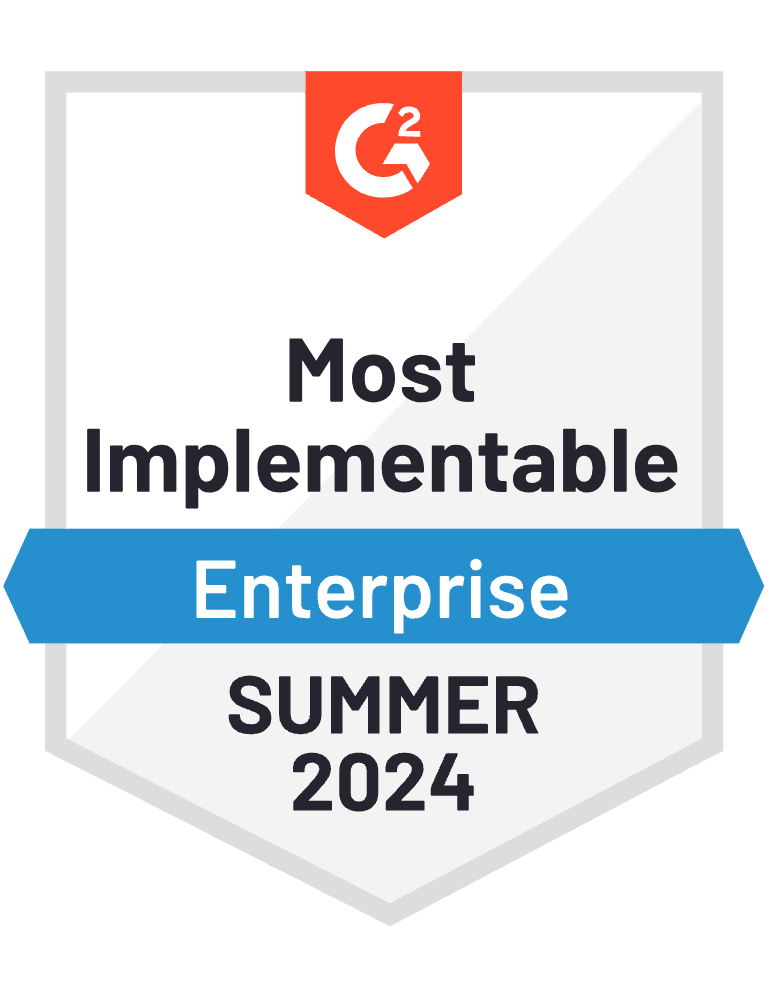In a tight talent market, the real competition isn’t just for experience—it’s for potential. Forward-thinking companies are shifting their recruitment and innovation strategies upstream, toward universities and early-career talent. But instead of relying on passive campus programs or resume filters, they’re embracing student innovation challenges as a strategic way to discover the next generation of thinkers, doers, and builders.
These challenges do more than engage students. When designed well, they become pipelines for identifying top early-stage talent, building brand affinity, and even solving real business problems along the way. In this article, we break down how student innovation challenges drive early-stage talent discovery.
Moving beyond traditional campus recruitment
Most corporate graduate programs haven’t evolved in a decade. Job fairs, case studies, and classroom presentations still dominate—but students are changing. They’re more entrepreneurial, digitally native, and impact-driven than ever before. And they’re looking for brands that don’t just offer jobs, but opportunities to co-create.
Student innovation challenges meet them where they are. By inviting students to solve real-world problems—whether in sustainability, digital transformation, or user experience—companies position themselves as collaborators, not just employers.
Platforms like Agorize help bring these challenges to life at scale, connecting enterprises with thousands of student teams from top universities across the globe.
Turning challenges into a talent filter
Unlike resumes or aptitude tests, innovation challenges give you something more powerful: context. You see how students think, how they collaborate, and how they pitch. You get insight into their creativity, critical thinking, and initiative—long before an interview ever takes place.
This makes student challenges a live assessment tool for future-fit talent. Especially when the challenge aligns with the company’s mission or a specific business area, you start to attract talent that’s not just smart—but aligned. It’s how student innovation challenges drive early-stage talent discovery much more efficiently than traditional alternatives.
What the best student challenges have in common
If you’re thinking about launching a student innovation challenge, success depends on more than just a good prompt. The most impactful initiatives share these traits:
- A clear, relevant business problem—students want to solve something real
- Multi-disciplinary participation—engineering, business, design, and more
- Structured mentorship—internal experts who guide and evaluate
- A strong incentive structure—internships, networking, or visibility
- Follow-through—recognizing winners, sharing outcomes, and staying connected
Real-world example: L’Oréal Brandstorm
Few student challenges are as well-established or globally recognized as L’Oréal Brandstorm. In 2023, the program took on new dimensions—not just in reach, but in relevance. Students were asked to “crack the new codes of beauty” through immersive tech experiences, pushing them to explore how digital, AR/VR, and AI could transform the customer journey in beauty.
Hosted on Agorize, the challenge attracted 92,000 participants across 150 countries. But what stood out wasn’t just the scale—it was the talent density. Finalist teams didn’t just propose ideas; they built prototypes, presented to L’Oréal’s global innovation leaders, and participated in a tailored accelerator program in Paris. For L’Oréal, this wasn’t just a recruitment tool. It was a global listening exercise, a pulse check on how future consumers and creators think—and a direct link to emerging talent with hands-on digital skills and entrepreneurial drive.
Real-world example: Bayer’s Digital Campus Innovation Challenge
Bayer took a more targeted approach with its Digital Campus Innovation Challenge, focusing on digital transformation within healthcare. Instead of casting a wide net, Bayer focused on a critical business question: how can digital solutions improve accessibility, outcomes, and patient experience?
University students across EMEA responded with real-world applications—ranging from AI tools for early diagnosis to mobile platforms improving treatment adherence. The winning team, composed of business and tech students, presented a data-powered approach to personalizing patient pathways. Bayer didn’t just award a prize—they opened a door. Finalists were invited to connect directly with Bayer mentors, with potential follow-ups for internships or co-innovation pilots.
This challenge shows how companies can use a single, well-structured student initiative to surface emerging talent, test out cutting-edge thinking, and strengthen their position as a digitally savvy employer in the life sciences space.
Global reach, local relevance
Another strength of student innovation challenges is flexibility. You can run global calls, targeting specific themes across multiple regions, or tailor challenges to individual markets or campuses. With platforms like Agorize, localization doesn’t mean starting from scratch—it means leveraging a single framework that adapts across cultures and time zones.
This also means you’re not bound to traditional academic calendars. Challenges can be run year-round, syncing with hiring needs or innovation roadmaps.

Building a future talent pipeline
Talent discovery isn’t a one-off event—it’s a continuous relationship. The smartest companies don’t just run one challenge and walk away. They build communities around early-career talent, nurturing promising individuals even if they’re not ready to hire yet.
This long-term view pays off. By the time a student finishes their degree, they’ve already solved a problem with your company, interacted with your team, and built brand loyalty. That’s a talent relationship no job board can match
Start early. Start strategically.
If you’re looking for a way to discover emerging talent while fueling your innovation agenda, student innovation challenges offer a rare dual ROI: future hires and fresh thinking. But like any strategy, they work best when integrated into a broader vision—one that treats talent discovery as a dynamic, creative, and collaborative process.
Agorize partners with leading enterprises to design, launch, and scale student innovation programs that attract top students and deliver real business outcomes. Whether you’re scouting interns, graduates, or simply new perspectives—this is where to start.










